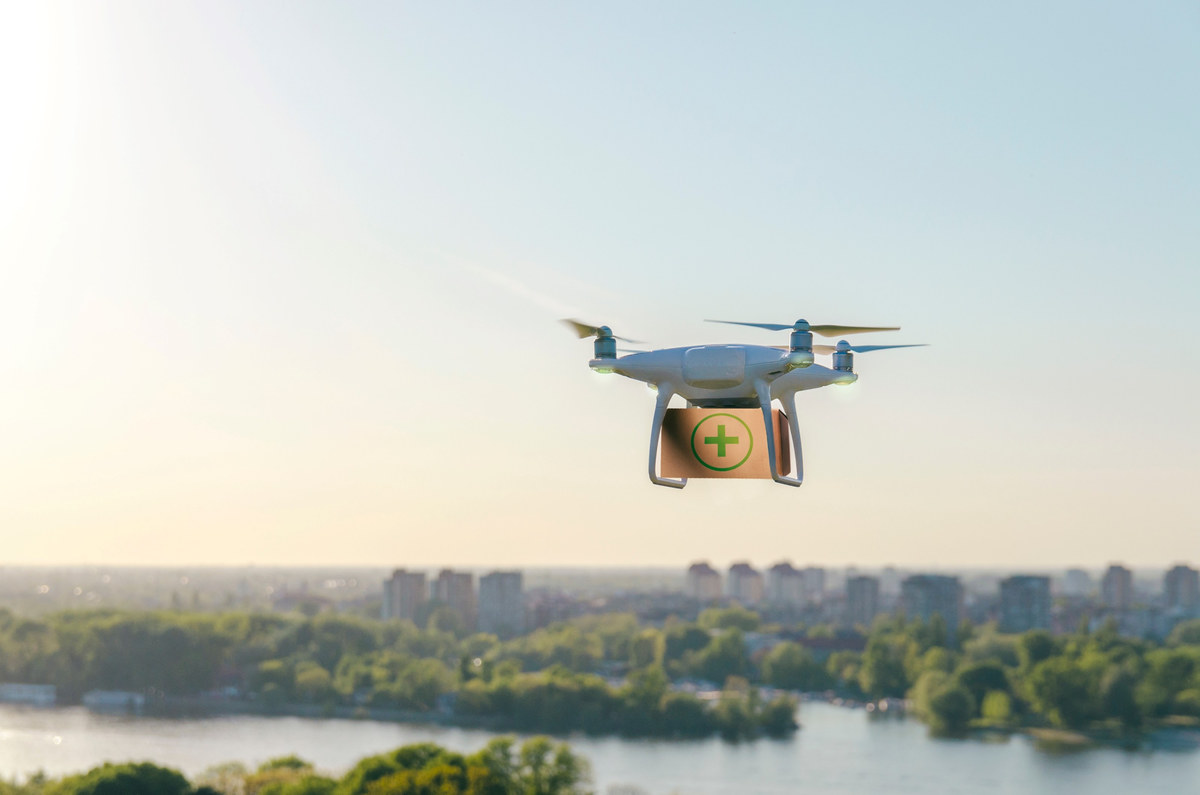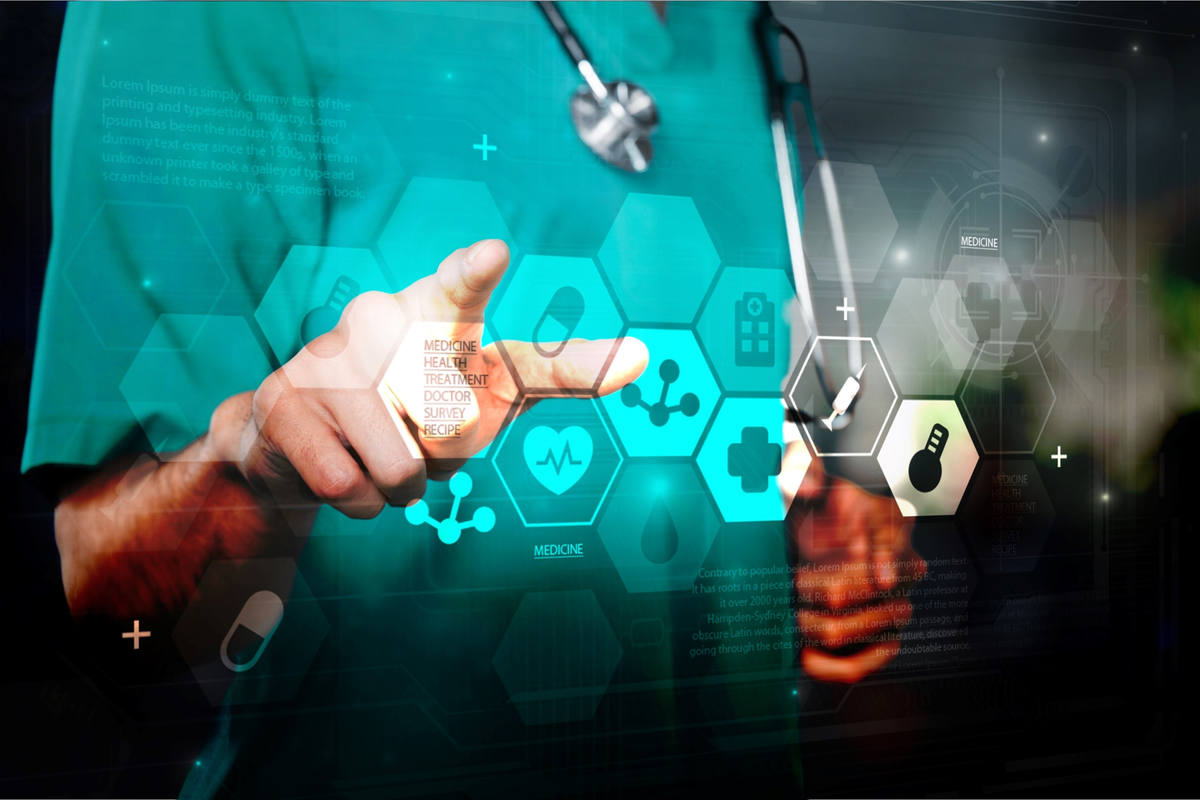The advantages of medical drones for the healthcare industry
The transportation of various materials to and from patients or to and from any medical facility can be costly, time-consuming or simply, very challenging. As deliveries are often time-sensitive, they need to be performed as quickly as possible, but classic delivery means relying on road traffic and can only go so fast and so far. For example, every moment counts when a patient in a life-threatening position is waiting for a blood transfusion. What if this person is located in a remote rural area? Medical drones can deliver it.
In fact, the ever-growing drone business embodies key assets which answer common bottlenecks in healthcare logistics:
- Cost: Once in place, the routes are less expensive than last-mile and small-packages deliveries via other vehicles, which cuts important “last-mile” unnecessary logistics costs.
- Time: By using air routes, medical drones will save important time and be critical partners in time-sensitive moments.
- Access: Drones’ size and design make them agile, allowing them to reach remote areas which couldn’t or wouldn’t be accessible with standard delivery vehicles. For example, in the context of wars, natural disasters or rural emergencies, medical drones will be able to reach distant areas with great chances of satisfying the on-site need in a timely manner.
- Environmentally: Often, trucks will hit the road quite empty, holding only small packages, and consuming unnecessary energy given the size of the packages. Drones allow to better adapt to these small to medium-size item delivery.
- Bonus: Drones can fly day and night, up to a 160 km round trip and in all kinds of weather conditions, it all depends on their power.
Facilitated delivery of medical supplies, reduction of virus infection thanks to the absence of human during transportation (e.g. distribution of vaccines during COVID-19 pandemic), helps with diagnostics and therapies in the more remote and rural areas, where doctors have discovered that drones can support them; these are all common examples of applications. Moreover, medical drones also have the potential to be used in telemedicine such as during surgeries, or in tele-assistance for nursing in more remote areas.
Today’s main medical drones’ operations
The use of drones is not evenly distributed around the globe, there are differences depending on the maturity and type of the technology, sectors of use and the laws and flight regulations of the country.
Importantly, the use of medical drones also has very different purposes depending on the geography. In richer countries, such as the ones in Europe, drones will be tackling an efficiency issue in healthcare, whereas in emerging or in low-income countries, they solve the issue of absence of healthcare, i.e., medical care finally reaches some areas.
In terms of players, there are two principal categories of companies involved with drones. On the one hand, the Drone Services Providers (DSPs) – the ones with the wings and routes. On the other hand, Business-internal Services – the ones with the packages to be delivered.
In healthcare, below are a few examples of DSPs:
- Matternet: Headquartered in USA, founded in 2011, they first flew above Swiss grounds between two hospitals in Lugano. Today, they are collaborating with UPS for medical samples delivery, and VillageReach in Lilongwe, Malawi, for blood transportation from remote areas to city hospitals.
- Zipline: Headquartered in USA, founded in 2014, Zipline handles, amongst other items, blood transfusion units across Rwanda. They are one of the most trending delivery drones in healthcare, why? They are saving lives.
- Instadrone: Headquartered in France and founded in 2014, the French startup is now testing transporting of blood samples in Montpellier in partnership with a French laboratory group, Inovie[1].
- RigiTech: Headquartered in Switzerland and founded in 2018, RigiTech’s focus is on laboratory logistics and their drones are flying in the Leman Lake area and in France transporting different medical samples, including blood samples.
What are the challenges related to the use of medical drones?
The concern of privacy and individual liberties
Some of the most common concerns around drones are related to privacy: Could drones violate individual liberties in the name of public safety? Noise pollution in urban areas is another concern, since in most cities noise management is already an issue. These genuine concerns are in line with the fact that drones are still in their early days and people are still adjusting to their presence and purposes. Their harmonious integration in an already established industry will require precise regulations that take into account all concerns.
“At some point, drones will become as normal as motorbikes.”, David Rovira, co-founder and CBO of RigiTech
The sustainability and environmental impact of drones
In the current environmental context, no new technology or device is without risks of further harming or affecting the ecosystems. However, compared with standard means of transport such as trucks (even electrical ones), drones have a much smaller environmental impact when it comes to delivering small units. Also, when drones are powered by renewable energy, they produce even fewer carbon emissions.
Nonetheless, one legitimate issue remains the capacity of drone companies to recycle and re-use both the structural and the electronic material of their drones. Today, some drones are made of recycled plastic, but most will be made of numerous materials such as metal, carbon and glass fiber, and all necessary resources for the electronics and the battery – which are the hardest parts to recycle. In 2014, a group of students in the context of an inter-university competition worked on a drone essentially made out of mycelium (fungi material) and said to be biodegradable.
The liability and insurance of medical supply drones
There are also concerns around the liability and responsibility of medical drones. As David Rovira said, “you need to think of a drone as yet another vehicle”, meaning that drones must have insurance. So, there exist specific drone insurances. As for the insurance of the content (samples etc.), firstly, most delivery drones are equipped with a parachute to mitigate the risk of sample damage in case of emergency landing. However, in case of damage, the burden of the cost will depend on the partnership and the binding contract between the laboratory and the drone operator, similarly to other transportation agreements.
Nevertheless, the more healthcare drones populate the sky, the more leverage the insurance companies will have to set their requirements. In fact, as the number of commercial drones increases, drone-specific insurances rise and with them, rules of operation can become more strict and complex, especially for the healthcare industry.
Discover how we can help you in your projects related to drones >
What needs to be done to ensure a safer and more informed use of medical drones
The field of medical drones faces significant regulatory challenges. To shed light on these issues, we have interviewed Manu Lubrano, CEO and co-founder of INVOLI, located in Switzerland, which aims at ensuring a safer and more informed low-altitude air traffic.
The necessity to ensure coordination between drones and other airborne vehicles
Firstly, drones over a certain size and power – drones flying “Beyond Visual Line of Sight” (BVLOS), and autonomous drones – must be registered in the relevant aviation authority registry for control purposes.
Since drones fly in the sky together with other air traffic, they need to be controlled by aviation guidelines. Regulations specific to drones are currently in writing or in adoption: it all starts with the writing of Industrial Standards, which are written by the industry with the hopes of becoming the law. For example, Manu L chose to co-write a new standard with the ASTM International, which seemed the most mature to be included in regulations of drone operations by EASA (European Union Aviation Safety Agency). The international law for aviation is then harmonized by the International Civil Aviation Organization (ICAO) and, around the globe, each local aviation body ensures that the international law is respected.
The need to mitigate risks through advanced air traffic control
Moreover, to be able to fly over a route, drone operators must fill a Specific Operations Risk Assessment (SORA), which takes up to 6 months to be finalised, as operators need to explain to the local Civil Aviation Authority how they intend to reduce the risks related to their drone operations. Once the SORA and the related flight authorisation are submitted, the civil aviation authority also takes up to 6 months to review it. So, within 12 months, the operator might have the authorization to fly the requested route. This is quite the wait for launching new operations, whichever size of business one has, so diversification is the key.
“Drones came to exist in a very mature and highly controlled industry, which is why their operation policies lag behind the pace of their own industry.” Manu Lubrano, CEO and co-founder of INVOLI
Other obstacles specific to this young sector
All these regulatory obstacles are only some of the challenges faced by drone operators. Below are other key challenges proper to a young industry and market:
- Aviation industry acceptance: Drones are the new players and challengers of the established aviation industry, which has been settling in since the first aircraft. The industry leaders and users must now work on making drones co-exist with manned aircraft.
- Drones operator scarcity: To date, there are not enough consequent drones operators, with flight operations subject to aviation regulatory bodies.
“So far, we’ve only had people willing to help, it’s the beauty of a young industry. And, as in any young industry, other’s successes don’t implicate someone else’s failure.” David Rovira, co-founder and CBO of RigiTech - High expectations: Very often, potential clients or partners need a proof of flight of a certain route to close a deal. However, as highlighted by David R and Manu L, putting everything in place for such a demonstration requires the same amount of effort and investment as making a 5-year plan for this same route.
Not only can this growing market answer healthcare loopholes and logistics bottlenecks, but it can also provide smart and sustainable solutions for smaller businesses.
Should you want to explore the drone market or find solutions to overcome challenges related to medical drones, our explorers are here to support you! Do not hesitate to contact our team!
[1] Poitiers, M. (2023, March 15). Instadrone va tester le transport médical par drone à Montpellier et ouvrir une filiale au Congo. www.usine-digitale.fr. https://www.usine-digitale.fr/article/instadrone-va-tester-le-transport-medical-par-drone-a-montpellier-et-ouvrir-une-filiale-au-congo.N2110136
About the author,
Thaïs, Consultant in the Alcimed’s Life Sciences team in Switzerland



